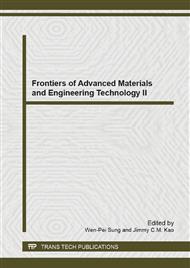p.1345
p.1349
p.1353
p.1357
p.1361
p.1365
p.1369
p.1375
p.1379
Research on Rehabilitation Robots of Motion Control PID
Abstract:
£o With its simple structure, good stability, reliable, easy to adjust, PID control is becoming one of the important technical of the process control field, and its study has been the focus of the field of motion control. The main content of this article refer to Analog PID, Positional PID, Incremental PID and Feedforward Compensation PID, introducting their principles and their model analysis, and giving their algorithm simulation results.
Info:
Periodical:
Pages:
1361-1364
Citation:
Online since:
April 2014
Authors:
Keywords:
Price:
Сopyright:
© 2014 Trans Tech Publications Ltd. All Rights Reserved
Share:
Citation:


